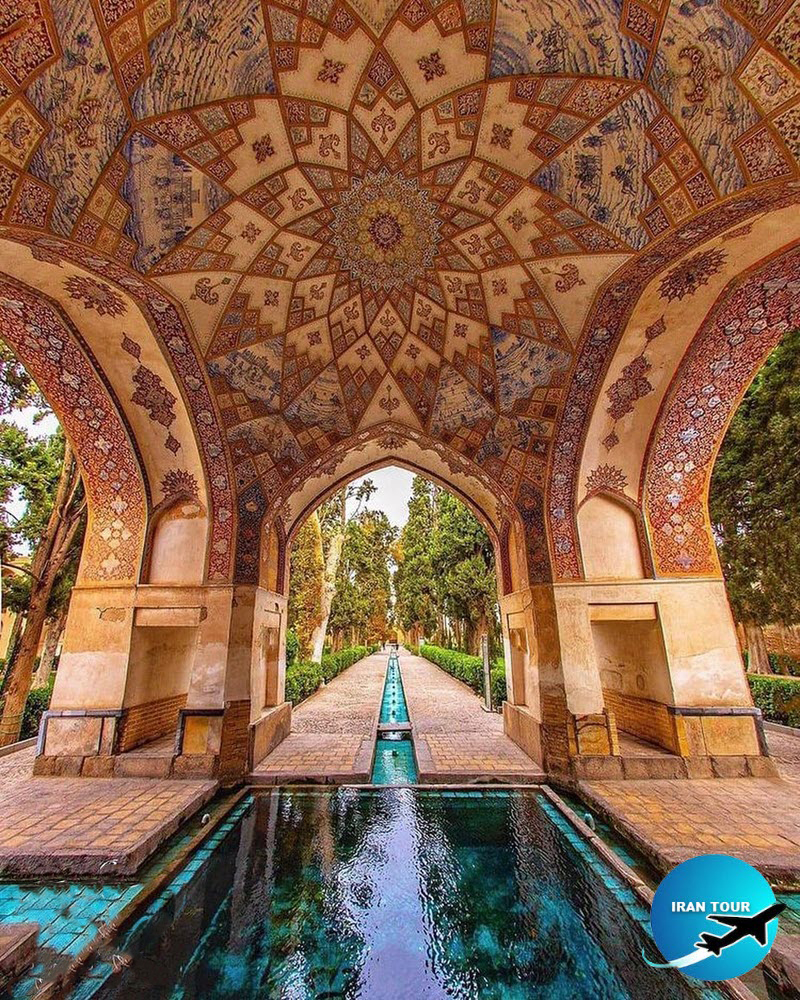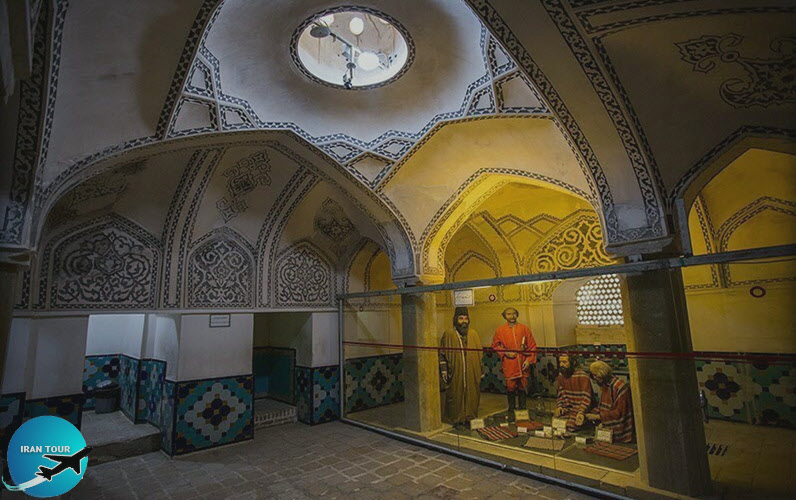Copyright 2020 - 2021 irantour.tours all right reserved
Designed by Behsazanhost
Fin Garden
Feen Garden
A spring of crystal clear water originating in the Karkas mountain range and gushes from a spring called Suleimanieh supplies Fin Gardens. The people of Kashan have built many pleasant gardens near this spring since pre-Islamic times. The ruins of the former garden clearly show a long period of occupation between the 10th and 16th centuries. The garden we see currently was constructed after a devastating earthquake in 1574. Shah Abbas I abandoned the ruined site and ordered the construction of the existing garden in the early 17th century, moving it 500 m higher and thus closer to the origin of the spring.
 |
In creating the new Fin Garden, the designers, architects, and artists aimed to establish a rational and logical relationship between the five senses of humankind and nature itself. The design skillfully uses the flow of water in this garden, as it descends. Shotorgelu Pavilion, built during the reign of Shah Abbas I, is located in the central part of the garden. The water enters here and flows backward and forward through the garden. The pattern is derived from Iranian gardens, as from this point, space is divided into four sections and in each part of the garden, some smaller gardens have in turn been designed. The Shotorgelu Pavilion had a four-porch plan overlooking the four directions of the garden. There was also a strong watchtower and a citadel designed to surround the garden since it was intended to house the Safavid kings when staying in Kashan during their travels. It was in this garden in Kashan that Shah Safi, the successor of Shah Abbas I, finally passed away due to alcoholic excess.
 |
The garden fared no better than the rest of the country after the Afghans' invasion and destruction in 1722. Karim Khan the Zand later built a specially dedicated palace in the southern part of the garden, known as the Khalvat-e-Karim Khani. Before long, another destructive earthquake occurred in 1782, and Feen Garden was abandoned again.
 |
The garden was given a new lease on life under Fat'h Ali Shah the Qajar. Under the supervision of his prime minister, the curb façade of the Abbasid Shotorgelu Pavilion and the main avenues of the garden was started along with the renovation of the big hammam and the construction of a smaller one. In addition, a new building called the Shotorgelu-ye Fat'h Ali Shahi (named after the second Qajarid king) was constructed. This building also has a four-porch plan, three of which overlook the garden. There is a big central pond, and a flowing fountain for spring water, decorated with beautiful frescos.
 |
After the death of the king, Fin Garden's fortune declined along with its buildings. A new king came to power who caused a historic disaster, the memory of which has remained in the minds of the Iranian people ever since. The fourth Qajarid king, Naser ed-Din Shah ordered the murder of Mirza Taghi Khan. Also known as, Amir Kabir, he was a great man, considered to be without equal in that period of Qajar rule. He was bled to death in the hammam of Fin Garden and since that time the Fin Garden became a place of mourning. After a shaky era under the Qajarids, Fin Garden was repaired and is currently a museum and recreational place for visitors.
- Details
- Category: KASHAN HISTORICAL SITES